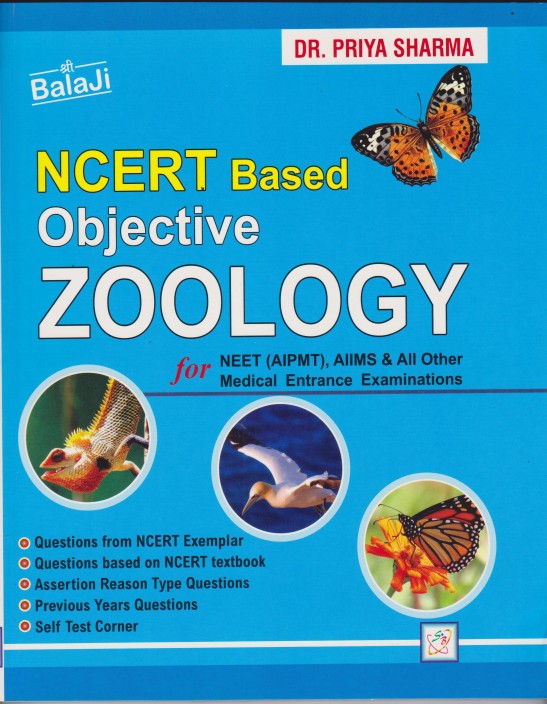(a) Both A and Rare true and R is the correct explanation of A.
(b) Both A and R are true but R is not a correct explanation of A.
(c) A is true but R is false,
(d) A is false but R is true.
Reason (R): Quick blocking of polyspermy sets in depolarization of the egg plasma lemma and mobilization as Ca +2 from stores within the egg.
Ans. (b)2. Assertion (A): Knowledge derived from geology has led to the belief that on our planet there have been no deposits without traces of life.
Reason (R): The existence of life wherever circumstances warrant its existence, is one of the characteristic features of the universe.
Ans. (b)
3. Assertion (A): In ascidians, the tadpole larva undergoes retrogressive metamorphosis to attain the adult stage.
Reason (R): The limbs of the larva gradually disappear to reach the sessile life.
Ans. (a)
4. Assertion (A): Gene is a biological entity-a heritable function detected by observing the effect of a mutation. i gene consists of all the DNA sequences necessary t produces a single peptide or RNA product.
Reason (R): The Gene is a single contiguous protein encoding stretch of DNA.
Ans.(a)
5. Assertion (A): After the addition of the last amino acid to a growing polypeptide chain, the protein syntheses terminate.
Reason (R): The terminator codon interacts with release factor(s) and the resultant RF terminator codon ribosome complex effectively blocks further chain elongation.
Ans.(b)
6. Assertion (A): The presence of contractile vacuole is very essential in Amoeba.
Reason (R): If the excess water is not removed, Amoeba would soon swell and burst.
Ans. (a)
7. Assertion (A): Cicada belongs to class Insecta.
Reason (R): Male sings loudly by two sets of vibrating plates on fore part of abdomen.
Ans. (b)
8. Assertion (A): Neopilina, discovered in 1952 is a primitive living mollusc.
Reason (R): Absence of shell is considered a primitive feature for a living molluscan form.
Ans. (c)
9. Assertion (A): Archaeopteryx is a connecting link between reptiles and modern birds.
Reason (R): It possesses pneumatized bones an avian character and opposable first toe of foot a reptilian character.
Ans. (c)
10. Assertion (A): The conjugation in Paramecium corresponds to cross-fertilization of higher animals.
Reason (R): The conjugation in process of reconstruction of nuclei involving the fusion of gametic nuclei.
Ans. (d)
11. Assertion (A): Cuticle of Ascaris is well-developed in structure and chemical organization.
Reason (R): The parasite has to protect itself from the injurious effects of the host’s chyme.
Ans. (c)
12. Assertion (A): Hirudo medicinalis sucks blood from different vertebrates.
Reason (R): Its buccal cavity includes three jaws.
Ans. (a)
13. Assertion (A): In Herdmania, the test is provided with vascular ampullae.
Reason. (R): These structures serve as means of excretion of waste products of the body.
Ans. (c)
14. Assertion (A): Anguilla anguilla can travel on damp grass.
Reason (R): Anguilla anguilla has vascular areas in the skin and its opercular openings are very small so that it retains water in the branchial chamber during its journey on land.
Ans. (a)
15. Assertion (A): In Amniota there is twelve pairs of cranial nerves instead often.
Reason (R): Amniotes have two additional segments in the head region.
Ans. (a)
16. Assertion (A): The eyes of nocturnal, cave and deep water animals have only rods in their retina.
Reason (R): Rods detect differences in the intensity of light but do not discriminate finer details of objects.
Ans. (b)
17. Assertion (A): In Branchiostoma, the origin of coelom is enterocoelic.
Reason (R): In Branchiostoma, coelom is formed from the splitting of mesodermal sheet.
Ans. (c)
18. Assertion (A): Cell movement during gastrulation is called morphogenetic movement.
Reason (R): Change of shape of embryo occurs by morphogenetic movement.
Ans. (a)
19. Assertion (A): In the late embryonic stage of chick, the embryo still derives its nutrition from the yolk although the neck of the yolk sac is constricted.
Reason (R): The omphalomesenteric vessels supply the nutrition to the developing embryo.
Ans. (a)
20. Assertion (A): Guinea worm can thrive only in the lymphatic tissues.
Reason (R): Lymph is a fluid.
Ans. (b)
